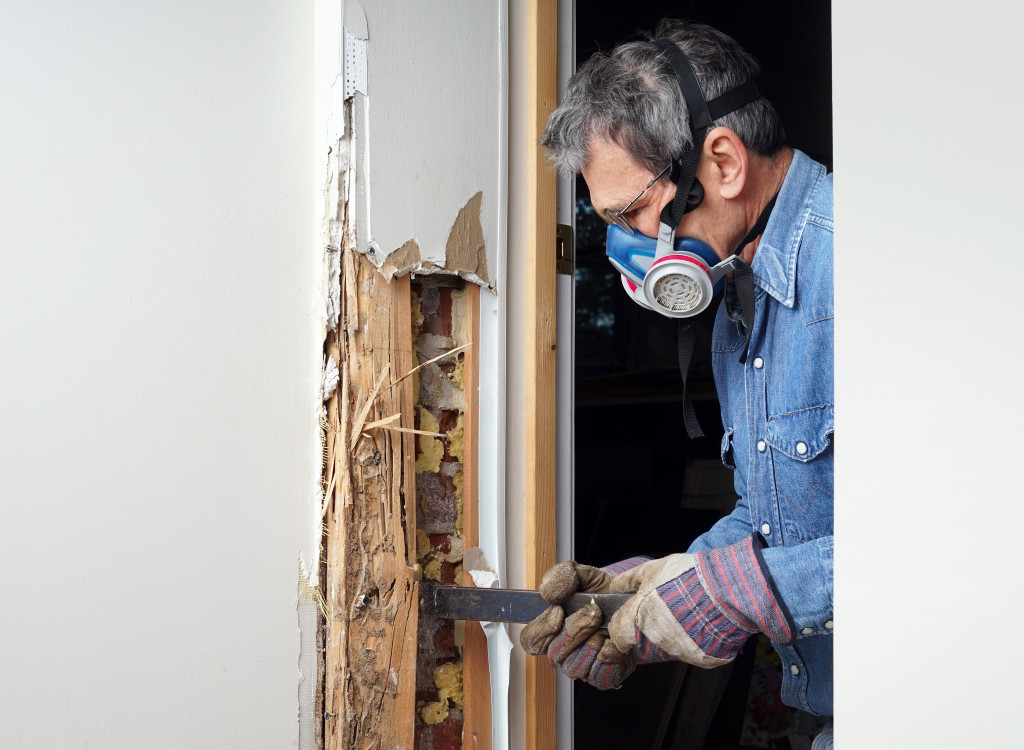• Identifying potential hazards and planning for mitigation is the first step to a safe home.
• Common house risks include electrical, plumbing, structural, and fire-related accidents or issues.
• Fire prevention measures such as installing smoke detectors and keeping combustible materials away from heat sources are essential
• Slip-resistant flooring should be installed in areas prone to wetness or wear.
• Regular maintenance is necessary for the upkeep of any home.
Whether renovating your existing home or building a new one, safety should always be your number one priority. You can take various steps in the design process to ensure that your home is safe and hazard-free for the whole family. Here’s a look at some ways you can improve the design of your house to prevent potential hazards.
Potential Hazards to Watch Out For
Before starting your home improvement project, it’s important to identify potential hazards and plan how to mitigate them. This is because, of course, your family’s safety is always a top priority. Here are the common hazards you should consider when planning your home improvement project.
Electrical Hazards
These involve any exposed wiring and are not covered by walls or flooring. Unsafe electrical wiring can lead to short circuits, electrical fires, and other dangerous accidents like electric shocks and burns.
Plumbing Hazards
Leaky pipes or faulty plumbing systems can lead to water damage and even flooding. This can cause mold growth, which can cause respiratory issues such as asthma and allergies. One of the signs of mold growth is musty odors in your home.
Cracked Surface
Cracks in the floors, walls, and ceilings can signify structural damage. This can lead to unexpected collapses or even fires if left unchecked. Cracks in the floors may cause tripping and, ultimately, injuries.
Fire Hazards
Anything that can increase the risk of fire needs to be addressed. This includes overloaded circuits, combustible materials near heat sources, and flammable liquids or gases stored improperly.

Home Improvement Tips to Keep Your Family Safe
Potential hazards at home can be addressed by following a few simple tips. Here are some home improvement tips to keep your family safe:
Fire Prevention
Ensure all outlets are equipped with surge protectors, so electrical fires do not occur. Install smoke detectors throughout the house and check them regularly to ensure they are working properly. Additionally, ensure all combustible materials, such as paper, fabric, furniture, etc., are kept away from direct heat sources like radiators or heating vents to prevent accidental fires.
Install Smoke Detectors
Smoke alarms are one of the best ways to detect fire hazards in your home. Make sure you have smoke alarms installed in every room, and check them regularly to ensure they are functioning properly. You should also install CO2 detectors in areas exposed to carbon monoxide from furnaces or other sources.
Inspect Your Plumbing System
Look for any leaks in your plumbing system, including pipes, water heaters, and other fixtures. Make sure that everything is connected properly and that there are no loose connections. If you see any signs of a leak, such as discolored walls, water spots, or strange odors, get them checked immediately.
Structural Examinations
Inspect the structure of your home for any cracks in the walls and ceilings. Have them inspected by a professional if necessary and repair any damage found. If you notice any sagging floors or walls, have these checked out immediately.
If you have concrete floors, walls, or ceilings that are cracked or damaged, consider concrete restoration for a more permanent solution. This involves using a concrete patching material to fill and seal the gaps, which can help protect your home from potential hazards like water damage and structural collapses.
Slip-Resistant Flooring
The flooring material in your home should be slip resistant so that people don’t accidentally fall while walking around the house. Certain surfaces, such as tile and hardwood floors, tend to be slippery and should be treated with a non-slip product to increase traction. Carpeted floors can also pose a problem if they become wet or worn out. Choose an area rug with padded backing or vinyl flooring to avoid this.

Ensure Regular Maintenance
Repairs will be pointless if you don’t follow through with regular maintenance. When the necessary repairs have been completed, make sure to inspect your home regularly for any potential hazards. Keep an eye out for any cracks in the walls, ceiling, and flooring and signs of water damage or mold growth.
If your house has been serviced by a professional, they can offer regular maintenance services to keep your home safe. These include checking for electrical or plumbing issues and inspecting for structural damage.
By following these tips and taking the necessary precautions, you can ensure that your family is safe from potential hazards in your home. Ultimately, it’s all about being proactive and doing what you can to create a safe and secure environment for your loved ones.




